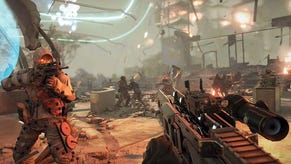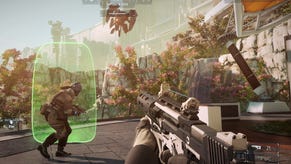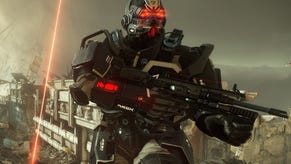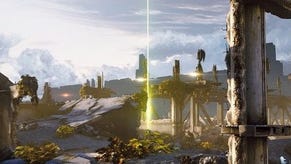Killzone Shadow Fall dev to be more precise about resolution in future
After native 1080p multiplayer claim was called into question.
Guerrilla Games has promised to be more precise when discussing the resolution of its games in the future after it was accused of misleading customers over the technical performance of PlayStation 4 exclusive Killzone Shadow Fall.
In an article titled "In Theory: 1080p30 vs 720p60 - could next-gen let us choose?", Digital Foundry explored the issue of trading pixels for frame-rate - and as part of that investigation revealed new information about Killzone Shadow Fall.
DF's Richard Leadbetter found that while in single-player mode the game runs at full 1080p, in multiplayer the game runs at 960x1080, utilising an innovative upscaling technique using previously calculated visual data.
Some players reacted angrily to the news, claiming they were misled by Guerrilla and Sony, which in the run up to Killzone's release had claimed it would run at a native 1080p resolution.
Now, the studio has published a new blog post, titled "Regarding Killzone Shadow Fall and 1080p", explaining what, exactly, was going on with the game.
"In both SP and MP, Killzone Shadow Fall outputs a full, unscaled 1080p image at up to 60fps," producer Poria Torkan said.
"Native is often used to indicate images that are not scaled; it is native by that definition.
"In multiplayer mode, however, we use a technique called 'temporal reprojection', which combines pixels and motion vectors from multiple lower-resolution frames to reconstruct a full 1080p image. If native means that every part of the pipeline is 1080p then this technique is not native.
"Games often employ different resolutions in different parts of their rendering pipeline. Most games render particles and ambient occlusion at a lower resolution, while some games even do all lighting at a lower resolution. This is generally still called native 1080p. The technique used in Killzone Shadow Fall goes further and reconstructs half of the pixels from past frames.
"We recognise the community's degree of investment on this matter, and that the conventional terminology used before may be too vague to effectively convey what's going on under the hood. As such we will do our best to be more precise with our language in the future."
Torkan went on to explain how the temporal reprojection technique works and why it was employed: "The temporal reprojection technique gave subjectively similar results and it makes certain parts of the rendering process faster," he said.
"This reduces controller lag and increases responsiveness, which improves the Killzone Shadow Fall multiplayer experience."
In Digital Foundry's original article, Leadbetter praised the technique.
"The fact that few have actually noticed that any upscale at all is in place speaks to its quality, and we can almost certainly assume that this effect is not cheap from a computational perspective," he said.










